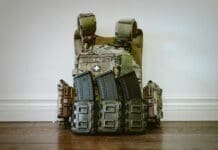This post is also available in:
 עברית (Hebrew)
עברית (Hebrew)
At present, remote piloting a robot, even by tablet, is labor-intensive. The soldier has to actively guide it in real-time, avoiding pitfalls and paying full attention. To more seamlessly integrate robots into the routines of warfare, the US Army is testing a range of robot-human communication tools.
The Robotics Research Center (RRC) at West Point, together with another Army lab and command, tested methods that could make it easier for soldiers to communicate with robots — through tablets and beyond.
The military can make the robots follow tablet-given instructions more autonomously, demanding less of the soldier’s time in battle. And eventually, with research done to improve robot ability to understand and act on human language, soldiers could do away with the tablets entirely, reducing the burden of commanding robots to the same as that of directing human troops.
“The ultimate goal of the RRC’s research is for a squad or platoon to task teams of aerial, wheeled and legged robots the same way they would their Soldiers – no Linux command line required,” Daniel Gonzalez, postdoctoral fellow at RRC in the Department of Electrical Engineering and Computer Science said.
Using the tablet is a bridge to that future. The ultimate vision, that of human-robot cooperation, will have to wait until the machines can listen in on briefings, or at least listen in on orders. And then, when the order comes, as bluntly as it might under fire, the robots and humans together can seamlessly spring into action, working towards the same purpose and able to communicate through words, according to popsi.com.

























